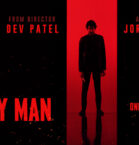3 Silent Films by Josef von Sternberg Criterion Collection Blu-ray review
The Criterion Collection’s release of 3 SILENT CLASSICS BY JOSEF VON STERNBERG is spine #528. It was originally released in 2010.
UNDERWORLD (1927)
“Bull” Weed (George Bancroft) is a known criminal, a professional bank robber who has evade enough police and racked enough heists to earn a reputation as one of the most notorious men in the city. After a successful score, he encounters “Rolls Royce” Wensel (Clive Brook), whose alcoholic ways seem a sort of pet project for Weed. This proves a foolish move, as soon enough Wensel cleans up and becomes involved with Weed’s girl, “Feathers” McCoy (Evelyn Brent).
Released in 1927, UNDERWORLD is one of the earliest gangster films. And while certainly far from the prestigious works that Warner Bros. would put out starting the following decade (James Cagney wouldn’t even be featured in a film for another three years), UNDERWORLD is commendable for much of what it presents. Screenwriter Ben Hecht presents some interesting dynamics, with not only a love triangle but a raging turf war between “Bull” and a rival dubbed “Buck” (Fred Kohler). (UNDERWORLD is clearly full of silly monikers–she’s dubbed “Feathers” because she wears feathers, see…Of note, such lousy nicknames could be inspired by “Bull”’s real-life counterpart, “Terrible” Tommy O’Connor.)
What may disappoint fans of von Sternberg’s is that the film is never quite the full visual feast that one would expect from the director. Still, von Sternberg has a clear vision for the story and characters and frequently indicates what would become of other early gangster pictures, a number of which it tops.
UNDERWORLD won Best Original Story at the first Academy Awards, nudging out the only other nominee, THE LAST COMMAND, also directed by von Sternberg.
THE LAST COMMAND (1928)
Hollywood, that “mecca of the world”, is booming, and top director Leo Andreyev (William Powell) is searching for his next star. He finds it in Sergius Alexander (Emil Jannings), who doesn’t appear to have the face of an actor, and through flashbacks it is revealed why.
A decade prior, Alexander was a general during the Russian Revolution. His fall from grand duke to movie extra is a wholly compelling one, as is his romance with actress Natalie (Evenlyn Brent), whose ties lead to a physical defect, and his fateful connection with Andreyev.
Despite the topics approached, THE LAST COMMAND dodges coming off as heavy handed or preachy, although the ending does miss a good opportunity. It flows well and von Sternberg is clearly aware when focus must shift for maximum effectiveness. There, too, are moments of meta acknowledgements, as clever links between battle and filmmaking offer some faintly amusing backstage images.
Jannings won the first Academy for Best Actor for his performance; of interest, he also won this year for THE WAY OF THE FLESH, the only such time an actor won for two roles in the same year
THE DOCKS OF NEW YORK (1928)
The docks of New York are a busy spot, with “strange ships and stranger men” going in and out day after day. The coal-covered workers are allowed a short leave ashore. On the night out, stoker Bill (George Bancroft) encounters the suicidal Mae (Betty Compson), who he rescues.
THE DOCKS OF NEW YORK is a simple enough story–working class man falls for down-on-her-luck girl–that von Sternberg, as well as the primary cast, are able to make good use of. As the lovers, Bancroft and Compson have a wonderful chemistry that makes the romance feel as if something could genuinely be on the line. Under the direction of von Sternberg, the story rises above what it, on the surface, should be, especially given the time of its release.
In addition, the wonderful photography by Harold Rosson (whose extensive career would also having him shooting THE WIZARD OF OZ and SINGIN’ IN THE RAIN) and tight screenplay by Jules Furthman (a staple of silents, although he would go on to co-pen classics like 1935’s MUTINY ON THE BOUNTY and Raymond Chandler adaptation THE BIG SLEEP) help push von Sternberg’s film near the top of the post-JAZZ SINGER silents.
THE DOCKS OF NEW YORK was von Sternberg’s penultimate silent film. His final, THE CASE OF LENA SMITH, is considered lost.
BLU-RAY REVIEW
Video: 1.33:1 in 1080p with MPEG-4 AVC codec on all three films. “These high-definition digital transfers were created on a Spirit HD DataCine, with density correction done on a da Vinci 2K. Underworld’s transfer was created from a 35 mm fine-grain positive, The Last Command’s from a 35 mm duplicate negative, and The Docks of New York’s from a 35 mm fine-grain master positive. Thousands of instances of dirt, debris, scratches, splices, and warps were manually removed using MTI Film’s DRS, while Digital Vision’s Phoenix was used for flicker and small dirt.”
Audio: Silent on all three films.
UNDERWORLD:
“Underworld”: How It Came to Be (36:22): In this 2010 video essay, UCLA film professor Janet Bergstrom recounts the life of Josef von Sternberg.
The Scores: Robert Israel’s 2010 score and Alloy Orchestra’s 2007 score are included.
THE LAST COMMAND:
Von Sternberg till ‘29 (35:16): In this 2010 video essay, critic Tag Gallagher offers an analysis on von Sternberg’s silent works.
The Scores: Robert Israel’s 2010 score and Alloy Orchestra’s 2009 score are included.
THE DOCKS OF NEW YORK:
Josef von Sternberg Interview (39:46): A 1968 interview with the director for Swedish television.
The Scores: Robert Israel’s 2010 score and Donald Sosin’s 2008 score are included.
Also included with this Criterion Collection release: “a booklet featuring essays by critic Geoffrey O’Brien, scholar Anton Kaes, and author and critic Luc Sante; notes on the scores by the composers; Ben Hect’s original treatment for Underworld; and an excerpt from von Sternberg’s 1965 autobiography, Fun in a Chinese Laundry, on actor Emil Jannings.”

 Mathew Plale
Mathew Plale















